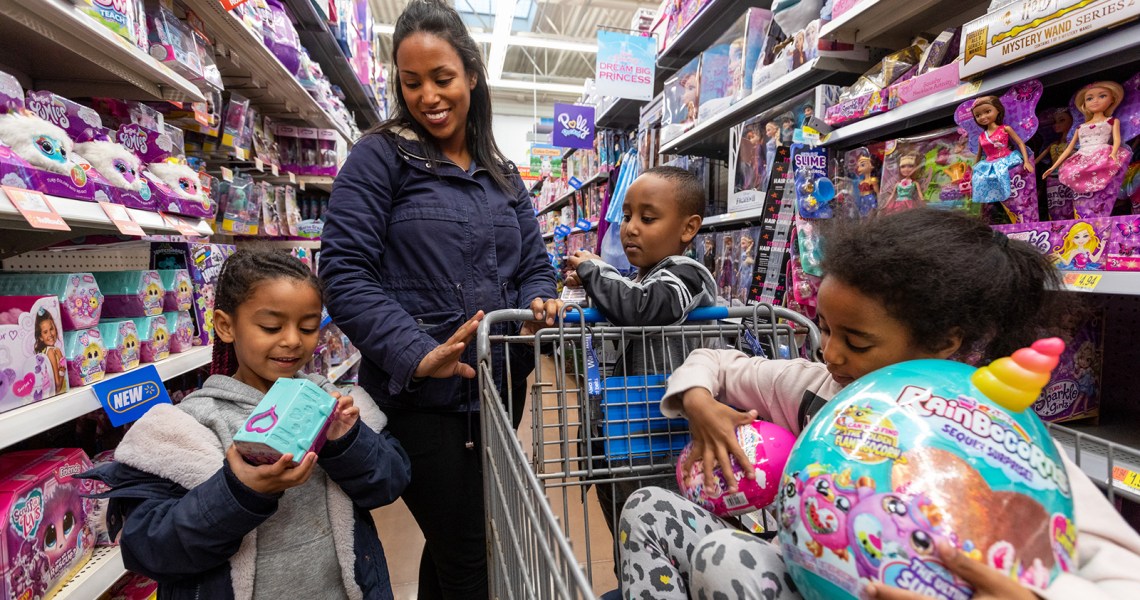This week, we take a look at how brands and retailers are putting profit margins at the center of their 2023 strategies as inventory problems and reduced consumer spending threaten their bottom lines. Scroll down to use Glossy+ Comments, giving the Glossy+ community the opportunity to join discussions around industry topics.
Fashion retail is in a perilous spot. The looming possibility of further economic decline and reduced consumer spending has retailers seeing flashbacks to the lowest point of the pandemic. Revenge spending in 2021 and 2022, plus pandemic savings that gave some consumers excess disposable income, helped. Now, those retailers are staring down what’s expected to be an incredibly difficult rest of 2023.
Brands and retailers Glossy spoke to for this story shared a common tactic for weathering the rest of this year: a maniacal focus on profit margins.
“There’s a consumer return to normalcy; we’re not revenge spending and retail is back to low single-digit growth,” said Kristin Gall, president of Rakuten Rewards. “So retailers are focused on margins. Their inventory was all over the place last year, and that meant their margins were really bad. Even Walmart had to get rid of massive amounts of inventory. Retail will be conservative this year because of a recession, and margins will be the keyword.”
As Gall noted, Walmart ended up sitting on more than $60 billion worth of inventory in the first quarter of last year. As a result, Walmart and other major retailers like Target had to resort to heavy discounting and promotions to burn through that inventory, which negatively impacted their profit margins.
In response, brands and retailers have started dropping entire low-margin categories in favor of higher-margin ones. The RealReal, which has made profitability an urgent goal after years of losses, is pulling back on home goods, which interim co-CEO Rati Sahi Levesque said in November was among the lowest margin categories sold on TRR.
“It was a little bit of growth at all costs,” Levesque said at the time. “One of our core initiatives early on was on the home: ‘We’re already in the house, so why not pick up everything we can?’ But to be honest, it’s quite expensive to ship these large items like home and art. And items like kids are so low value that [it’s not profitable to sell them].”
Marie Driscoll, managing director of luxury and retail at Coresight Research, said managing inventory and margins will be a key battleground for retailers throughout the next year.
“You should reduce your inventory on hand as much as possible,” Driscoll said. “Train the consumer that you won’t have a ton of stuff on the shelves in-store. Reduce [your inventory load so] your money isn’t so tied up in inventory that you’re forced to mark down and devalue your brand equity. That’s the No. 1 [priority] right now.”
Both large and small companies are making changes to increase their margins. At the end of March, H&M revealed that various cost-cutting efforts it enacted over the last year, like laying off 1,500 people last November, have led to a profit margin increase from 0.9% to 1.3% over the last year. The company plans to bring that margin up to 10% next year.
Francesca’s, a Houston-based fashion retailer with more than 400 stores across the country, has similarly sought to increase its profit margins, pulling back on the frequency of its bigger top-of-funnel marketing plays and doing only a few larger campaigns throughout the year. Instead, it’s relying more on performance marketing, which is much easier to measure return on investment.
“Our investors have high expectations,” said Jann Parish, CMO of Francesca’s, who previously worked at brands including Tommy Hilfiger, Calvin Klein and Victoria’s Secret. “We’re focused on the near term much more than I ever have at some of the big international brands I’ve worked at.”
And for the most part, direct-to-consumer isn’t considered the ticket to better margins as it was a few years ago. Direct-to-consumer brands can’t rely on the built-in audience of a larger retailer like Nordstrom, and at the same time, customer acquisition costs have continued to rise throughout the last year.
“We’ve done a lot of research on DTC, and we found that pivoting to direct [sales] does not result in better margins,” said Simeon Siegel, managing director and senior analyst at BMO Capital Markets. “Whether you’re a startup or you’re Nike, wholesale with the right partner is a great option right now.”
Brands’ main complaint about wholesale has often boiled down to a loss of control over brand identity. But in a tight economic environment, that loss of control may be a fair trade for a more efficient way to sell inventory.
“We work with thousands of retailers, and the thing we’re hearing above all is efficiency,” Gall said. “If I spend a dollar here, how much will I get out of it? I have a goal that I need that dollar to reach. Efficiency is the word, and efficiency goes straight to profitability.”
Inside our coverage
Coachella 2023’s brand promos: Revolve, Clinique and Neutrogena head to the desert
As resale competition intensifies, Etsy adds bidding option
New York or Nowhere’s Quincy Moore and Liz Eswein on strategizing around big-name collaborations
Want to discuss this with our editors and members? Join here, or log in here if you're already a member.




